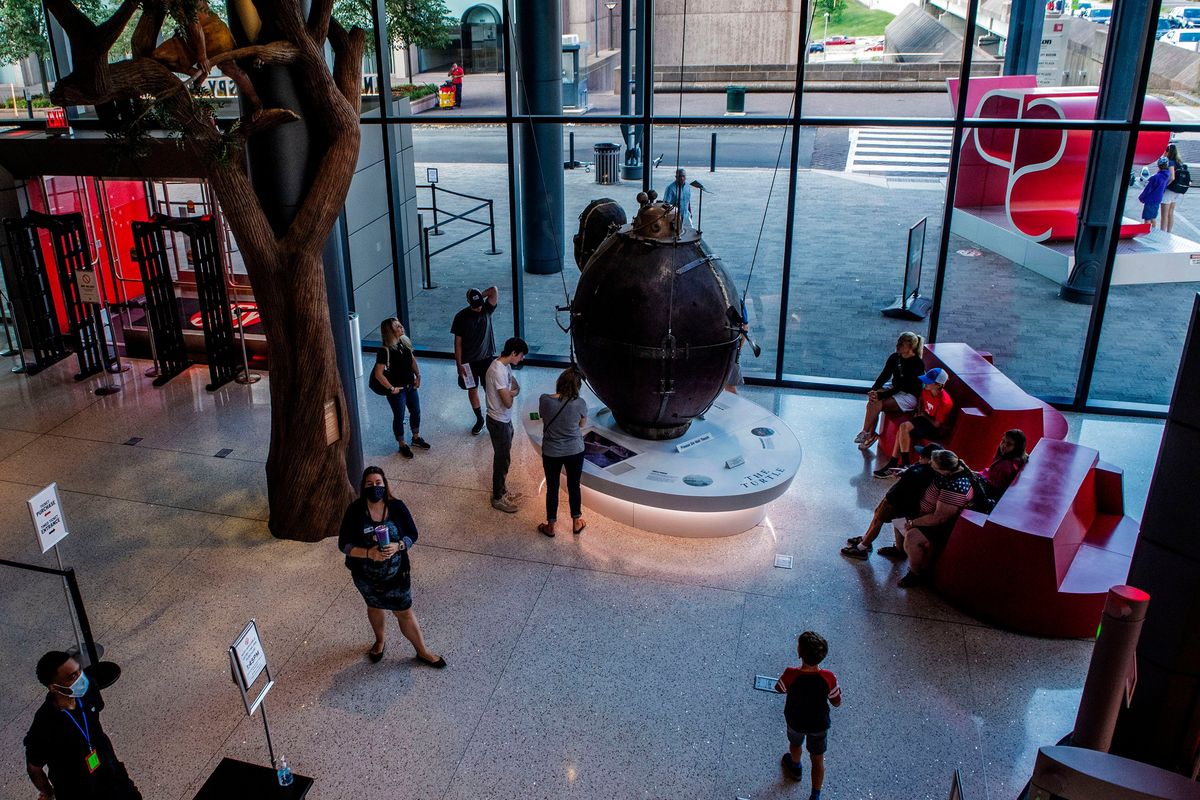International Spy Museum marks 20 years of revealing tricks of the trade

It’s no secret: Lucy Stirn loves working at the International Spy Museum in Washington, D.C. And not just because she gets to tell kids about spies hiding things in fake tiger poop – a highlight of any museum tour.
“You’re never going to have a kid come in and say ‘Oh, that’s boring,’ ” said Stirn, director of youth education at the museum, which celebrates its 20th birthday this month.
There’s something for everyone among the museum’s 10,000 artifacts. Part of the appeal for kids is “it’s a little naughty and a little sneaky,” said Stirn, a former teacher who has worked at the museum for 10 years. “They come in looking for the cool gadgets,” she said. “They don’t know about the historical aspects, so we [reveal] that, too.”
Visitors are surprised when an object that appears to be one thing turns out to be something very different, said Andrew Hammond, the museum’s artifacts curator and historian.
What looked like tiger poop was actually a device used to detect enemy troop movements in jungles during the Vietnam War (1955-1975). No one ever thought to pick it up and examine it.
“All is not what it seems,” Stirn reminds young visitors. Another example: An ordinary-looking dead rat in an alley might have been gutted to hide money or messages in it. Spies used these rats during the Cold War with the Soviet Union (1945 to 1991). When stray cats began picking up the rats, agents sprinkled them with hot sauce. Problem solved.
The Soviets turned the tables on U.S. intelligence in 1945 when some students visiting the American ambassador in Moscow gave him a hand-carved Great Seal of the United States. The attractive gift stayed in his office for seven years, until technicians discovered a bug hidden inside. It took them two months to figure out how it worked.
Many museum exhibits have clever origins. Hammond likes the “amazing” story of pigeons fitted with tiny cameras and released over World War I battlefields to photograph enemy positions.
Other artifacts popular with kids include a dragonfly drone, a camouflage suit that makes an agent seem invisible by blending into the background, and a microdot camera that can reduce film images to the size of the period at the end of this sentence. A special historical artifact is a 1777 letter in which George Washington seeks to start a spy network during the American Revolution.
There are stories and items from many countries and several “try it” challenges such as defusing a bomb (not a real one, of course) and walking like a ninja. Visitors are given agent names and assignments.
The spy museum moved to its current, larger facility in Southwest Washington in 2019. The added space allowed for new displays that go to “the dark side” of espionage, one museum official said. Controversial topics such as interrogation techniques, leaks of classified information and intelligence failures are now included. Workshops with older students may feature discussions of ethical (right versus wrong) issues and current news events.
The museum also offers special programs for people with autism or memory loss. And last year it added a robot, so hospitalized kids can tour the building remotely by controlling where the robot goes and what its camera sees. It’s just one more supercool thing at the International Spy Museum.
Word wise
Do you know the language of “spookspeak”? (Spook is another word for a spy.) Some popular terms include:
Agent: person working for an intelligence service
Blown: when an agent’s identity or a mission is no longer a secret
Cover: the made-up identity an agent uses
Cryptology: scientific study of secret writing
Dead drop: secret location where materials are left for another person
Handler: case officer in charge of agents during operations
Mole: spy inside one agency who gives secrets to a rival agency
Paroles: passwords spies use to identify one another